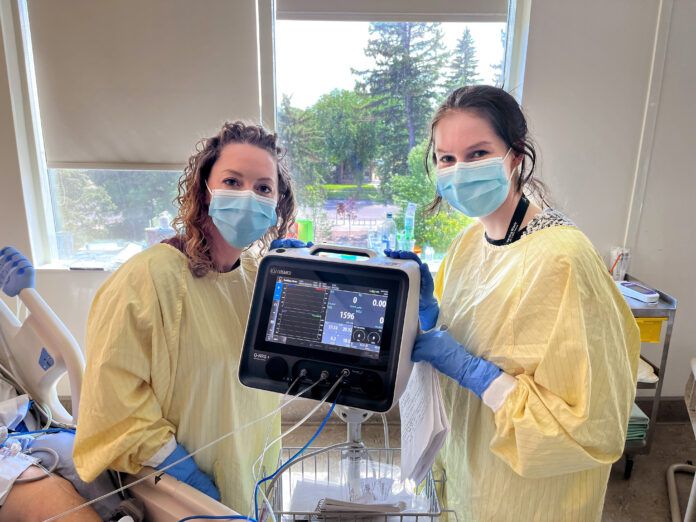The indirect calorimeter is about the size of a small laptop computer and is used by registered dietitians to determine a patient’s calories burned and help them determine how much to give through tube feeding and IV nutrition.
“The introduction of the equipment was a very proud occasion for our dietitian team,” said Lauren, ICU registered dietitian. “It has allowed us to integrate the gold standard for determining patients’ energy expenditure into our practice. That means that our nutrition support regimens are based on more accurate data, obtained from just 10 minutes or so of measuring gas exchange, so that we can avoid under, and over-feeding. It’s exciting to be treating our patients with cutting-edge healthcare technology and we are so grateful for the Chinook Regional Hospital Foundation’s generosity which has made it possible.”
The $35,000 instrument was purchased by Chinook Regional Hospital Foundation.
Nutrition requirements can be difficult to predict in critically ill patients, as many factors such as stress, brain activity, inflammation and medications can affect the amount of energy their bodies need. Emily Stein is also an ICU registered dietitian and said the new equipment will make a big difference for patients.
“It can optimize recovery to improve outcomes, shorten hospital stays, decrease ventilator days, decrease readmission rates and decrease time spent in the ICU,” she said.
This is the first indirect calorimeter in the South Zone; they are commonly used throughout Edmonton and Calgary zones. The indirect calorimeter is being used in the ICU and with some patients on surgical and medical units at the hospital, aiding in patient care of COVID-19, trauma, surgical cases, or other potentially life-threatening conditions. Stein and Tweel project it will be used for about 100 patients over the year, including those on mechanical ventilation.






